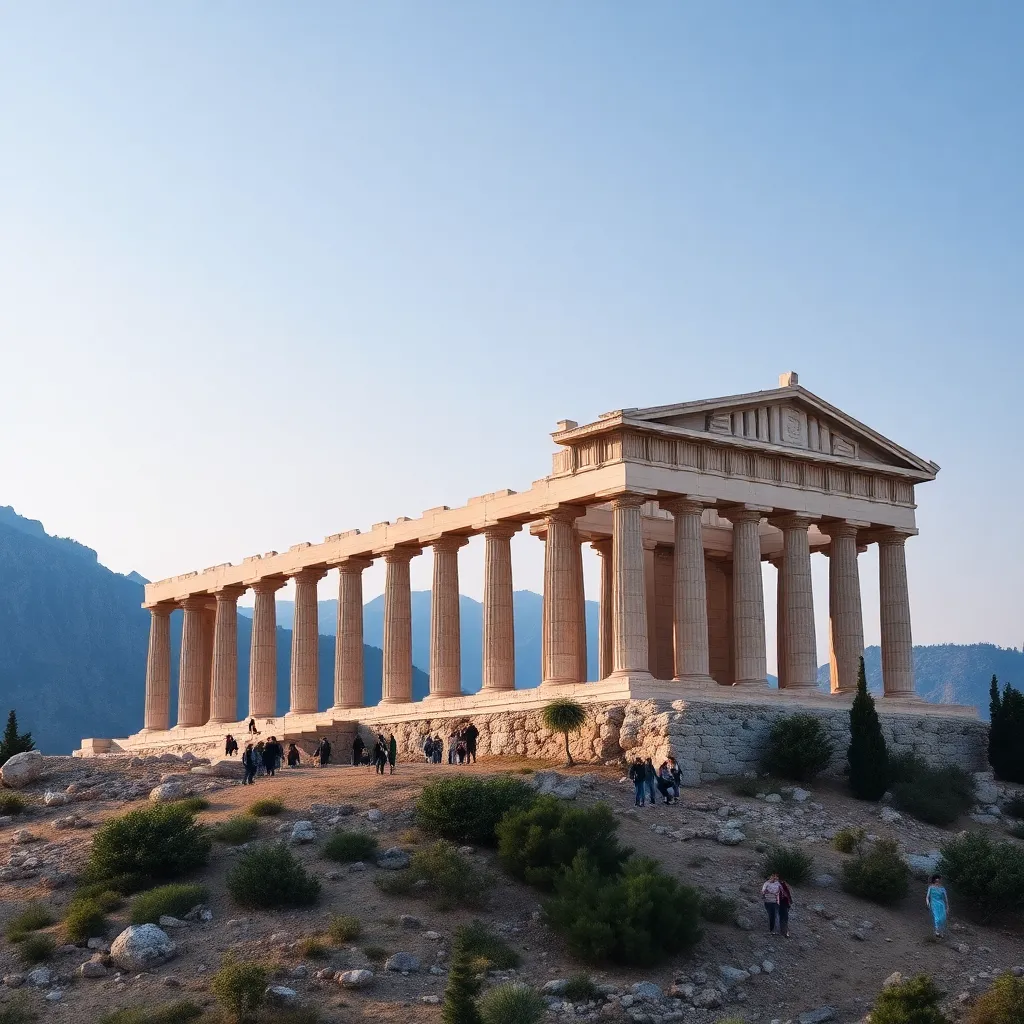The Architectural Wonders of Mount Olympus in Ancient Greece
I. Introduction
Mount Olympus, the highest mountain in Greece, has long been revered as a significant cultural and religious site. Known as the home of the gods in ancient Greek mythology, it stands as a symbol of divine power and grandeur. The architecture of this sacred mountain reflects the ingenuity and artistic spirit of ancient Greek society, showcasing their advanced engineering and aesthetic sensibilities.
This article aims to explore the architectural wonders of Mount Olympus, examining its historical significance, the temples that grace its slopes, and the unique architectural styles and techniques that define this iconic site.
II. Historical Significance of Mount Olympus
Mount Olympus is steeped in mythological background, famously associated with the twelve Olympian gods, including Zeus, Hera, and Poseidon. It served as the divine abode where these gods were believed to dwell, overseeing the affairs of mortals from their lofty heights.
In ancient Greek religion, Mount Olympus played a pivotal role in various rituals and festivals. The mountain was not only a place of worship but also a site for the Olympic Games, celebrating physical prowess and honoring the gods. Its influence on Greek architecture is profound, as the desire to create lasting monuments to these deities inspired countless structures throughout the region.
III. The Temples of Mount Olympus
The architectural landscape of Mount Olympus is dotted with several remarkable temples, each dedicated to a different deity.
- Temple of Zeus: This magnificent temple, built in the Doric style, was one of the largest of its kind in the ancient world. Its design featured grand columns and intricate sculptures, emphasizing Zeus’s status as the king of the gods.
- Temple of Hera: The Temple of Hera, dedicated to the queen of the gods, showcases exquisite craftsmanship. It served as a significant site for Hera’s worship and was characterized by its elegant proportions and beautiful friezes.
- Other Notable Temples: Additional temples dedicated to other gods, such as Apollo and Athena, contributed to the architectural richness of the region. Each temple had its unique features and architectural styles, reflecting the diversity of worship and artistic expression.
IV. Architectural Styles and Techniques
The architecture of Mount Olympus is primarily characterized by three classical styles:
- Doric Style: Known for its simplicity and strength, this style features sturdy columns with fluted shafts and plain capitals.
- Ionic Style: This style is recognized for its elegance, with slender columns and scroll-like volutes on the capitals.
- Corinthian Style: The most ornate of the three, Corinthian columns are tall and intricately decorated with acanthus leaves.
These architectural styles were not merely aesthetic choices; they reflected the values and cultural priorities of ancient Greek society. Unique structural techniques, such as the use of entasis (a slight curvature in columns), ensured that the structures were not only beautiful but also stable and enduring. Local resources, including limestone and marble, influenced the design and construction methods, leading to distinctive regional variations in temple architecture.
V. Sacred Structures and Altars
In addition to temples, Mount Olympus was home to numerous sacred structures and altars that played essential roles in religious practices. Altars, often located in front of temples, were sites for sacrifices and offerings to the gods, integral to rituals and ceremonies.
Beyond the temples and altars, other sacred spaces included:
- Gymnasiums: These were places for physical training and education, embodying the Greek ideal of a balanced mind and body.
- Theaters: Theaters served as venues for dramatic performances and festivals, enhancing the cultural life of the community.
These structures fostered community gatherings and festivities, reinforcing social bonds and collective identity among the worshippers.
VI. Preservation and Archaeological Discoveries
Efforts to preserve the architectural remains of Mount Olympus have been ongoing, with archaeologists and historians working tirelessly to protect these invaluable structures. Excavations have revealed significant findings that shed light on the construction techniques and cultural practices of the ancient Greeks.
Notable archaeological discoveries include:
- Fragments of sculptures and reliefs that adorned the temples.
- Inscribed dedications and offerings that provide insight into the religious practices of the time.
- Foundations of lesser-known structures that highlight the extent of the sacred landscape.
The impact of ongoing research continues to deepen our understanding of ancient Greek architecture, revealing the complexities and nuances of their building practices and religious life.
VII. Cultural Impact and Legacy
The architectural legacy of Mount Olympus has influenced various periods and styles throughout history. Its grandeur and divine associations have inspired countless artists, architects, and writers over the centuries.
The portrayal of Mount Olympus in art and literature is profound, often serving as a metaphor for divine beauty and power. Famous works, such as Homer’s “Iliad” and “Odyssey,” celebrate the mountain’s significance and the gods residing within it.
In modern times, interpretations and representations of ancient Greek architecture continue to resonate. From neoclassical buildings to contemporary art inspired by Greek mythology, the legacy of Mount Olympus endures, reminding us of the timeless beauty and cultural importance of these ancient structures.
VIII. Conclusion
The architectural significance of Mount Olympus is a testament to the ingenuity and creativity of ancient Greek society. Its temples, altars, and sacred spaces not only served religious purposes but also embodied the artistic and architectural achievements of the time.
As we reflect on the enduring legacy of these ancient structures, it becomes clear that preserving historical sites is crucial for future generations. They offer invaluable insights into our past, enriching our understanding of culture, religion, and the human experience. Mount Olympus stands as a lasting symbol of divine majesty and architectural brilliance, inviting us to explore its wonders for generations to come.




